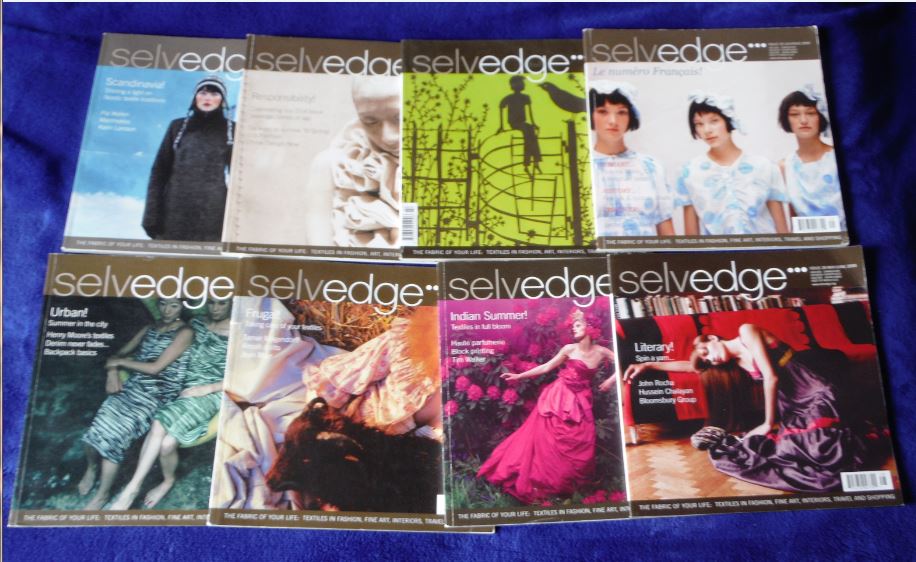More Tips from an eBay Power Seller
- by Susan Halas

Specialized magazines such as the UK's Selvedge on textiles and fiber arts bring good prices.
Magazines can sell as single sheets like the Coke ads, they can sell as featured visuals like the MM spread or they can sell as lots, like the dazzling textile arts publication SELVEDGE published in the UK, possibly the most fascinating contemporary design publication around. What they have in common is they all started life as a magazine, came in cheap and went out the door fast.
While we’re on the subject don’t forget to clip the interesting and unusual parts from the magazines that pass through your own hands (I stash mine in the Tyvek bags so thoughtfully provided by the USPS, they’re breathable yet nicely bug resistant). Pack them away for future appreciation. You’ll be surprised how interesting some of that ephemera looks as the years go by.
3. Include the copyright information
Sellers get 12 free pictures with every eBay listing. Most of you know by now what “points of issue” are -- those quirky little nit picky things that make one edition of a book more interesting or desirable from a collector’s point of view than another. Those picky things can often be found on the back of the title page. The copyright statement with Library Congress and ISBN numbers, editions, number line, edition statement and all that fine print is often the best way to substantiate your written description. So zoom in and take that photo and use that photo in your listing. It’s not a sexy image, but it’s a money maker.
4. Good Girl Art (GGA) is still in demand
Casting about for categories that sell include pinups, vaguely lurid pulps and other visuals that go by the handle Good Girl Art (GGA). It’s all still in demand, though more often than not the good girls shown are trying to be bad. That’s part of their charm.
5. If you have a point of view -- push it
For example I am currently interested in the Pacific centered world. That’s because I live in Hawaii, the red hot center of the Pacific and the 50th state in the USA. We are small; we are isolated but, get this straight, we are the hub and the wheel revolves around us.
Admittedly this is not yet universally acknowledged and has not yet become standard practice in mapping. The maps most of us grew up with had an Atlantic centered world. The Pacific Ocean was usually drawn with half on the far left and the other half at the far right. Even today the true picture of the largest geographic feature on the planet is seldom standard. Comes now the Pacific century and this is slowly changing; even so, earlier images of a Pacific centered world can be hard to find and in my experience usually command a premium.
Not that you’re going to be selling any Pacific maps, but it does illustrate an interesting perspective to use in descriptions. That’s another way of saying if you have a point of view that the buyer may find intriguing - it doesn’t hurt to push it.